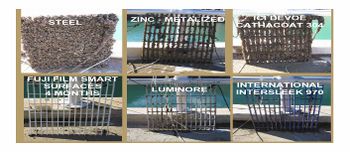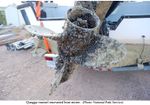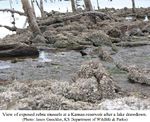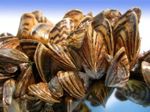- Fact Sheets
- Training
- Knowledge Assessments
- Trivia
- Key Topics
Difference between revisions of "Quagga"
(add pic) |
(add quagga pic) |
||
| Line 48: | Line 48: | ||
---- | ---- | ||
| − | [[File:Pipe Encrusted with Zebra Mussels.jpg|150px]] [[File:Quagga Mussel encrusted boat motor.jpg|150px]] [[File:View of Exposed Zebra Mussels.jpg|150px]] [[File:Zebra and Quagga Mussels.jpg|150px]] | + | [[File:Pipe Encrusted with Zebra Mussels.jpg|150px]] [[File:Quagga Mussel encrusted boat motor.jpg|150px]] [[File:View of Exposed Zebra Mussels.jpg|150px]] [[File:Zebra and Quagga Mussels.jpg|150px]] [[File:Zebra mussels (Dreissena polymorpha).jpg|150px]] |
Revision as of 09:56, 21 November 2014
This is the Quagga Mussle Information Page-
Quagga mussels continue to be a major problem in the Colorado River. Since being discovered in Lake Mead in the Lower Colorado River in early 2007, the quagga mussels have spread rapidly in the watershed. Young mussels float in the water column and get carried by the water currents downstream, while adults attach themselves to the bottoms of boats and can be transported miles away. Quagga mussels, natives of Europe and Asia discovered in the Great Lakes region in the late 1980s, can grow to about 1.5 inches and are clogging water lines that are used to cool the 17 massive hydropower turbines at Hoover Dam. They have caused similar problems at the downstream Davis Dam in Lake Mohave and Parker Dam in Lake Havasu, both of which provide electricity for thousands of people in Arizona and California. Reclamation, which operates the Hoover, Davis and Parker dams, has employed divers with high-pressure water hoses to blow mussels out of pipelines and filter gates. But those treatments are expensive, and the results are only temporary. "Mussels have the potential to disrupt water delivery and hydropower generation functions and to create long-term economic impacts...,"
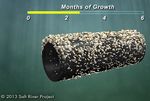 Quagga Pipe 2013-Video Clip- Courtesy of Salt River Project
Quagga Pipe 2013-Video Clip- Courtesy of Salt River Project
Contents
Quagga Facts/ Trivia
What are the Currently Effective Control Methods Used for Mussels?
Methods of Control:[1] Oxygen Deprivation | Temperature Treatments | Exposure and Dessication| Ultraviolet Radiation | Manual Scraping | High-pressure Jetting | Mechanical Filtration | Passive and Barrier Filtration | Removable Substrates | Chemicals (Chlorine) or Molluscicides | Ozone | Antifouling Coatings | Electric Currents| Sonic Vibration | Natural Predators or Biological Controls| Bacteria (Pseudomonas Fluorescens)
Quagga Mussel Information
Zebra VS Quaggas:
- Quaggas are the dominant species of the two and will displace Zebras.
- Quaggas tolerate colder temperatures, and are more abundant at greater depths, reproduce at lower temperatures, and are more likely to grow in single layers and produce more patchy distributions.
- Unlike Zebras, Quaggas don't necessarily need hard substates to attach and grow. They can grow on the soft, silty bottom sediments.
Quagga Mussel Archive
- JS-Online_Quagga Video link_Affects to the shore line of Great Lakes
- 080509_Quagga Video Feed at Fish Hatchery
References
Rules and Laws
- Utah law prohibits the transport of quagga mussels — dead or alive — through the state. Violators are subject to thousands of dollars in fines and up to one year in jail for a crime that is classified as a Class A misdemeanor.
The Bureau of Reclamation- Quagga web-page
- Finding Durable Foul-Release Coatings to Control Invasive Mussel Attachment Highlighted in Bureau of Reclamation Study
LINK to Video Clip--- USBR Mussels Page


